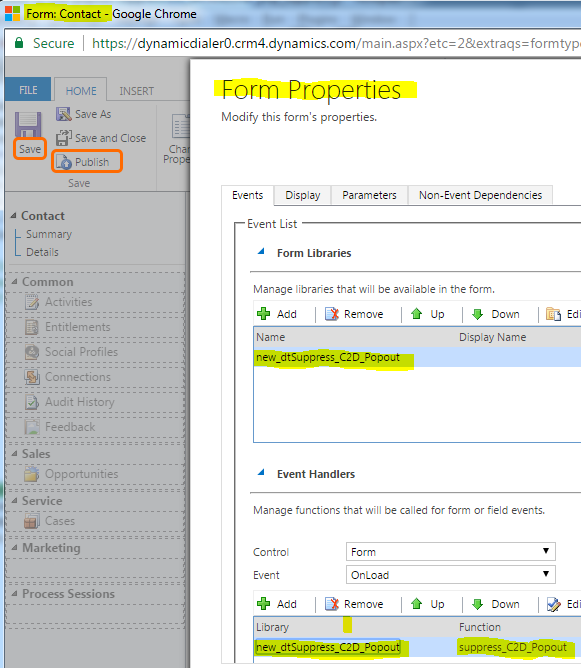For troubleshooting, you may need to access the log file. It is on the DT Menu in the DT Client. Alternatively, the last 30 days of logs are in folder: C:\Users\Aidan\AppData\Roaming\CT Solutions\DynamicsTelephony
1. Getting message “Cannot connect to CRM…” AND logfile has “..An unsecured or incorrectly secured fault was received from the other party..”
Solution 1: Check client PC and server properly synced to a time server. Check Microsoft KBs for updates related to time / DST for your country.
Solution 2: The Service User (background user) must not use 2-factor authentication. Make a special Service User, with a very strong password, for Dynamics Telephony to use, that does not use 2-factor authentication. See here.
2. Application won’t start
Solution 1: Check .NET 4.6.2 is installed. If not, you can use this link to install it: https://www.microsoft.com/en-ie/download/details.aspx?id=42642
Solution 2: Check Visual C Runtime 2015 installed. If not, install the 32-Bit (X86) version from https://learn.microsoft.com/en-US/cpp/windows/latest-supported-vc-redist
3. Application won’t start
Solution: Full reinstall client, including deleting folder CONTENTS of C:\Users\user_name\AppData\Local\Apps\2.0 and C:\Users\user_name\AppData\Roaming\CT Solutions
4. Error message “..entry point ucrtbase.terminate …not be located …api-ms-win-crt-runtime…”
Solution: Try installing the X86 Visual C++ runtime from https://learn.microsoft.com/en-US/cpp/windows/latest-supported-vc-redist
IMPORTANT: For both 64-bit and 32-bit systems, you need the 32-bit (X86) version of the install.
5. SIP settings not saving and Log file says: “Unable to load DLL ‘pjsipDll.dll‘: The specified module could not be found.”
Solution: Try installing VC 2015 Redistributables: https://learn.microsoft.com/en-US/cpp/windows/latest-supported-vc-redist
IMPORTANT: For both 64-bit and 32-bit systems, you need the 32-bit (X86) version of the install.
6. There is no log file in same directory as DynamicsTelephony.exe
Solution: Make the parent folder read-write for All Users
7. Cannot logon. Logfile has “…a reference that cannot be resolved: ‘https:…” when connecting to a CRM with Certificate issues.
Solution: Fix the certificate issue. Temporarily try entering the “Organization Url” in settings. You get this from CRM at Settings > Customization > Developer Resources – Organization Service.
8. Getting message “Invalid URL“
Solution: Append main.aspx to the URL. e.g. https://mycrmfullurl/main.aspx
9. Getting message “User is not a System Administrator” on non-English CRM
Solution: Make sure the role the user is assigned is exactly named System Administrator
10. Getting message “Cannot connect to CRM…”.
Solution: Check CRM connection in a browser. If it is OK, then run DynamicsTelephony.exe /admin and re-enter the Service User credentials..see here
IMPORTANT: ONLY do this if ALL users are having this EXACT issue. Otherwise, Dynamics Telephony may stop for ALL USERS. This issue usually only arises during first client installs.
11. Log file has message “The located assembly’s manifest definition does not match the assembly reference“. This problem is found with MSI based installations.
Solution Make sure the file DynamicsTelephony.exe.config in the application folder has these lines near the bottom.
<dependentAssembly>
<assemblyIdentity name=”Newtonsoft.Json” publicKeyToken=”30ad4fe6b2a6aeed” culture=”neutral” />
<bindingRedirect oldVersion=”0.0.0.0-12.0.0.0″ newVersion=”12.0.0.0″ />
</dependentAssembly>
<dependentAssembly>
<assemblyIdentity name=”Microsoft.Xrm.Sdk” publicKeyToken=”31bf3856ad364e35″ culture=”neutral” />
<bindingRedirect oldVersion=”0.0.0.0-9.0.0.0″ newVersion=”9.0.0.0″ />
</dependentAssembly>




